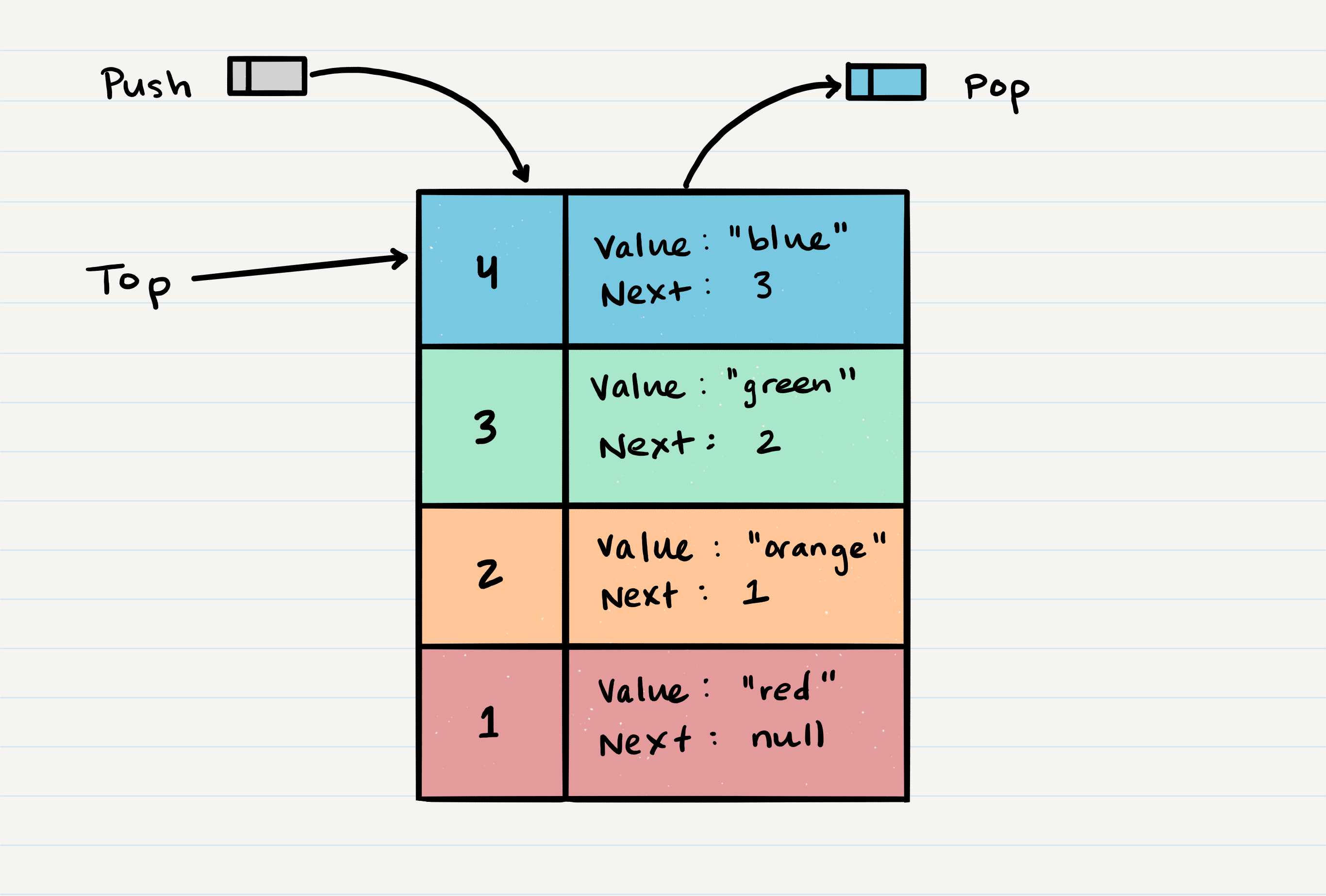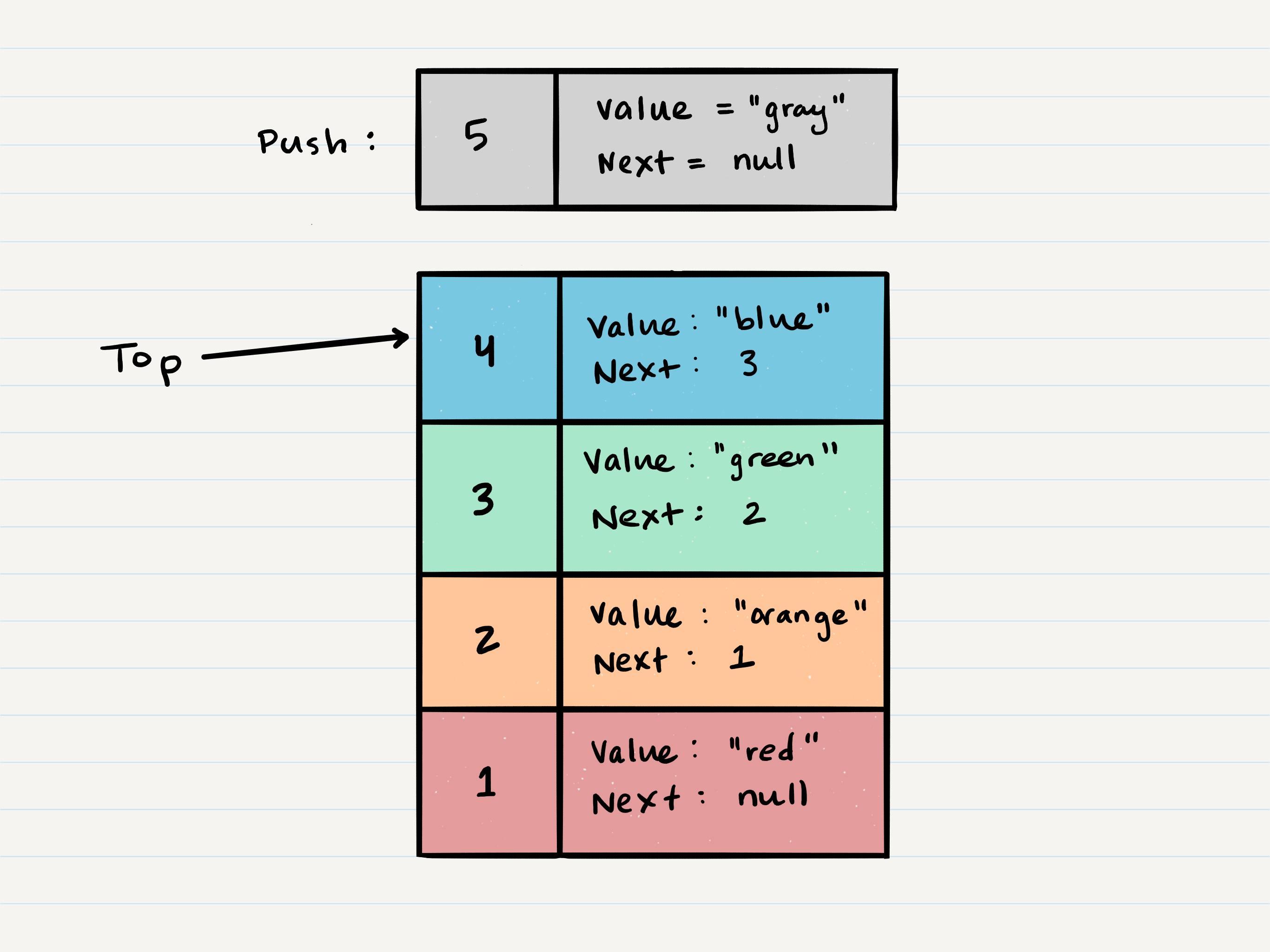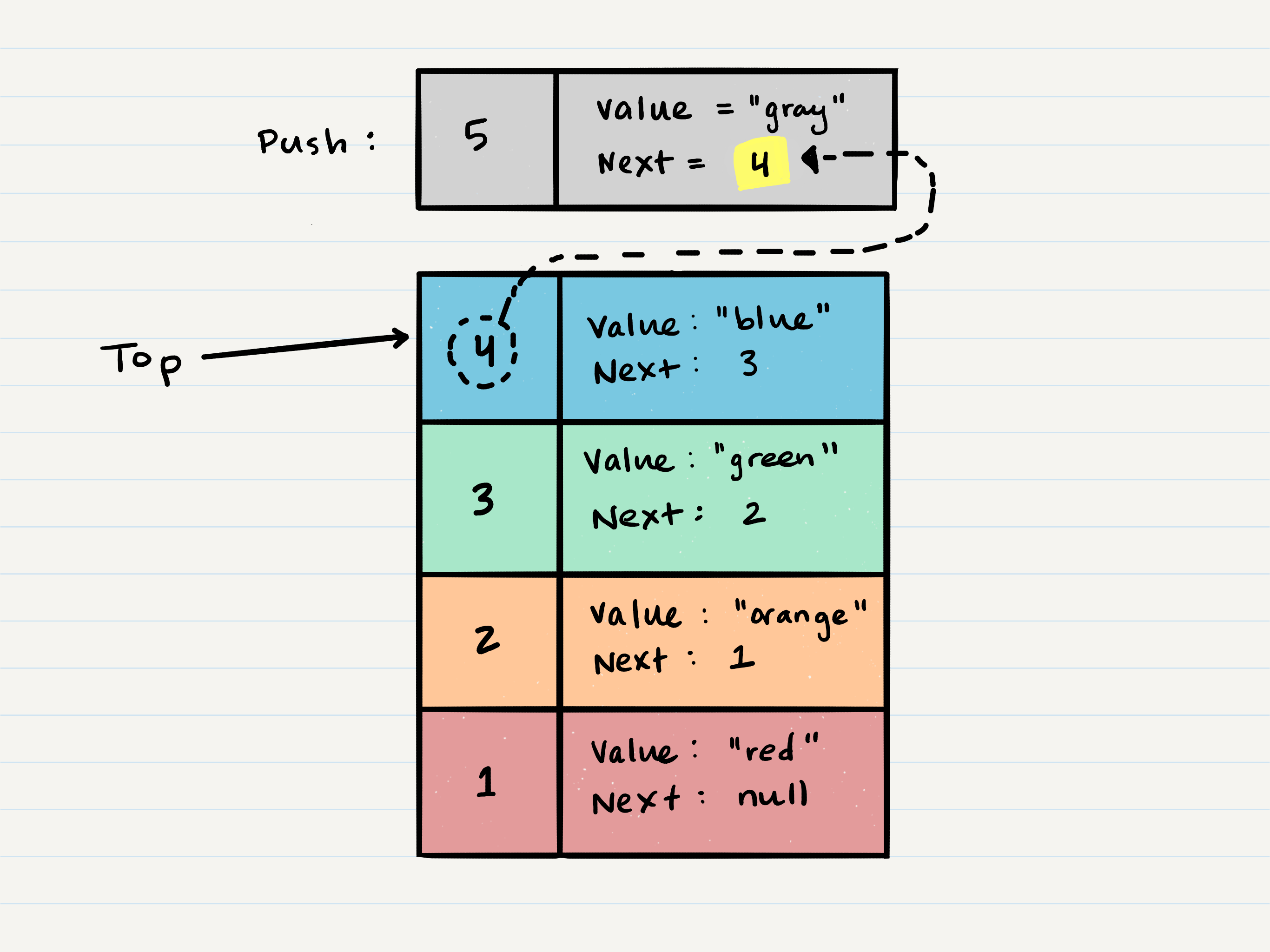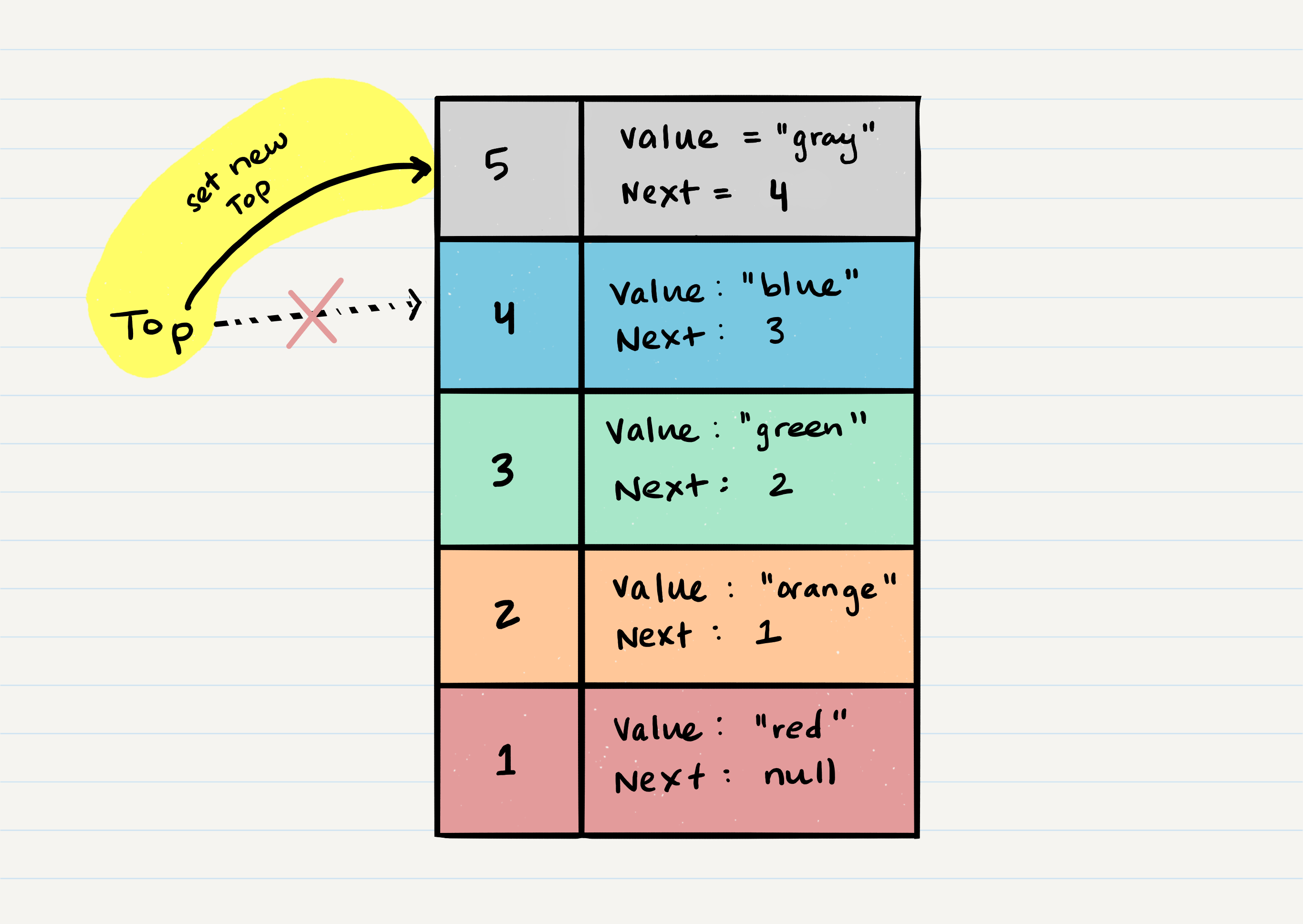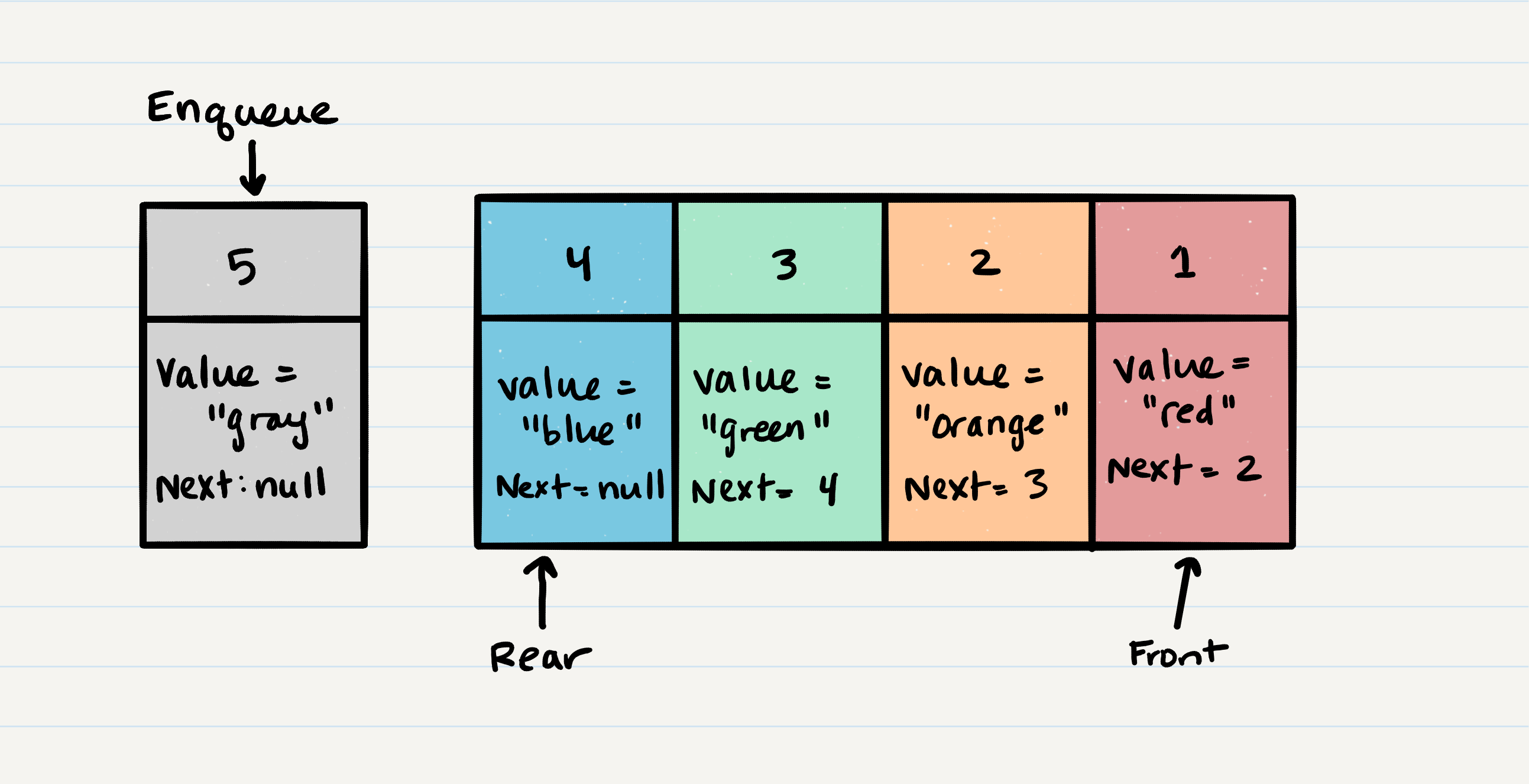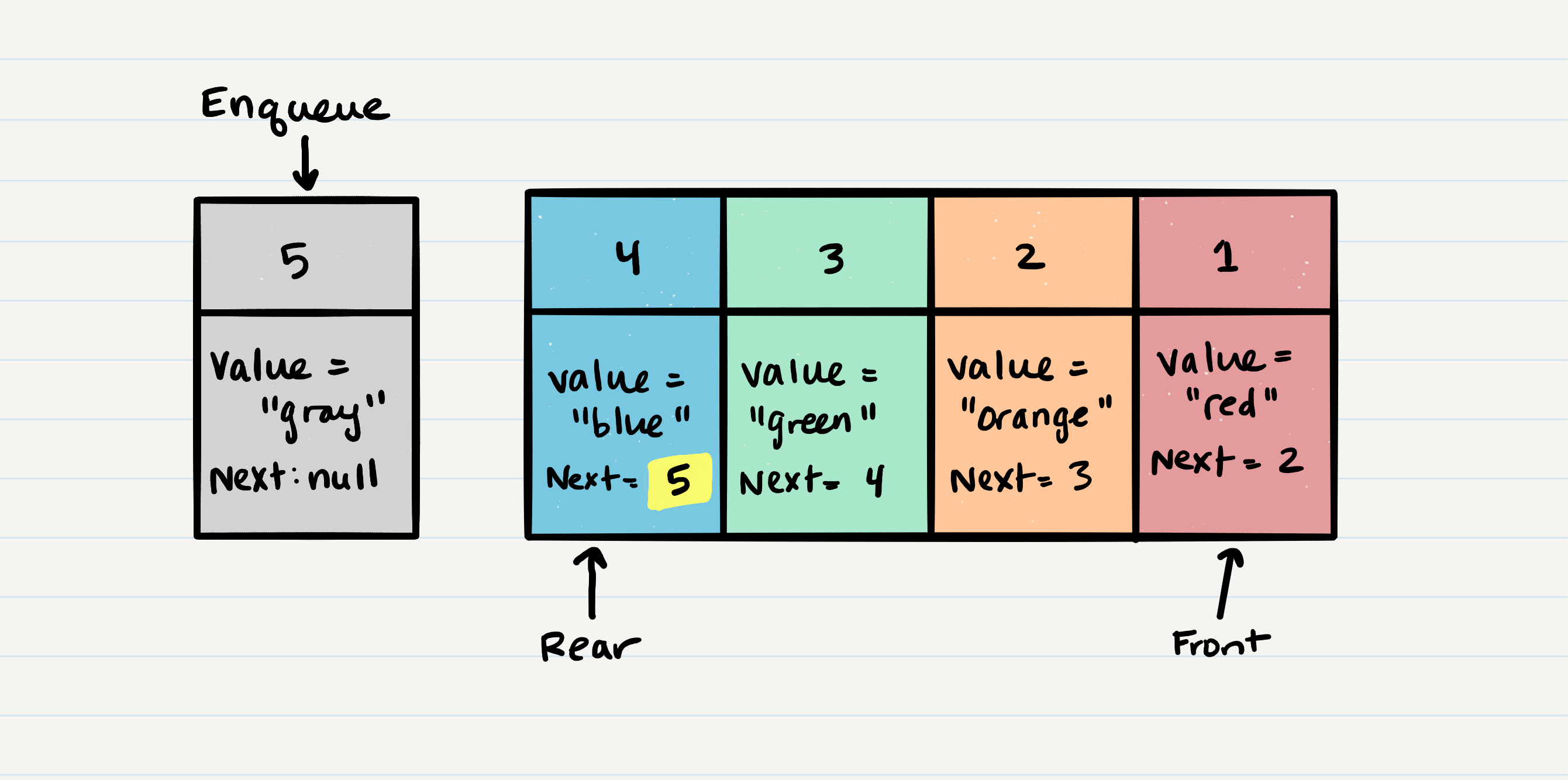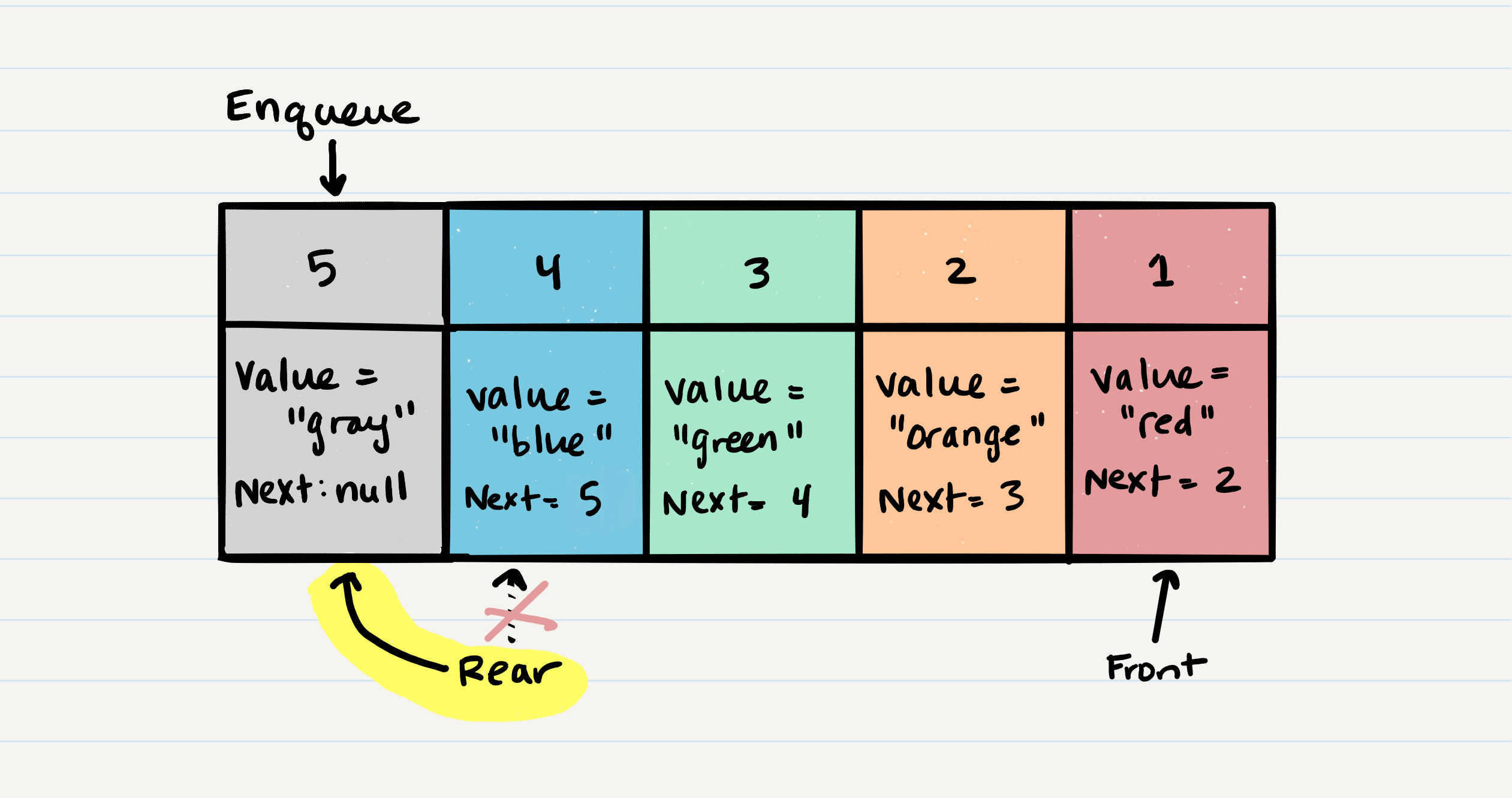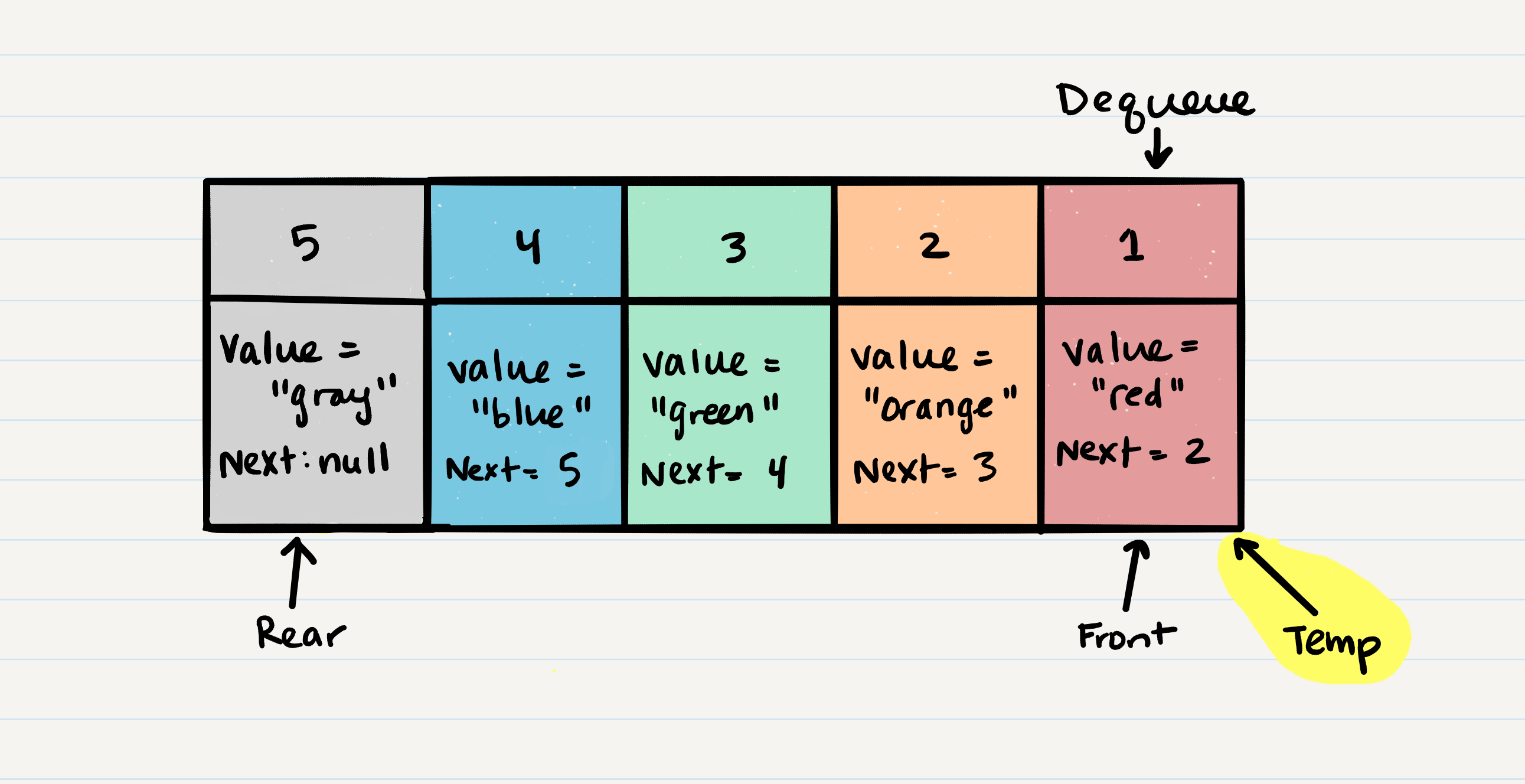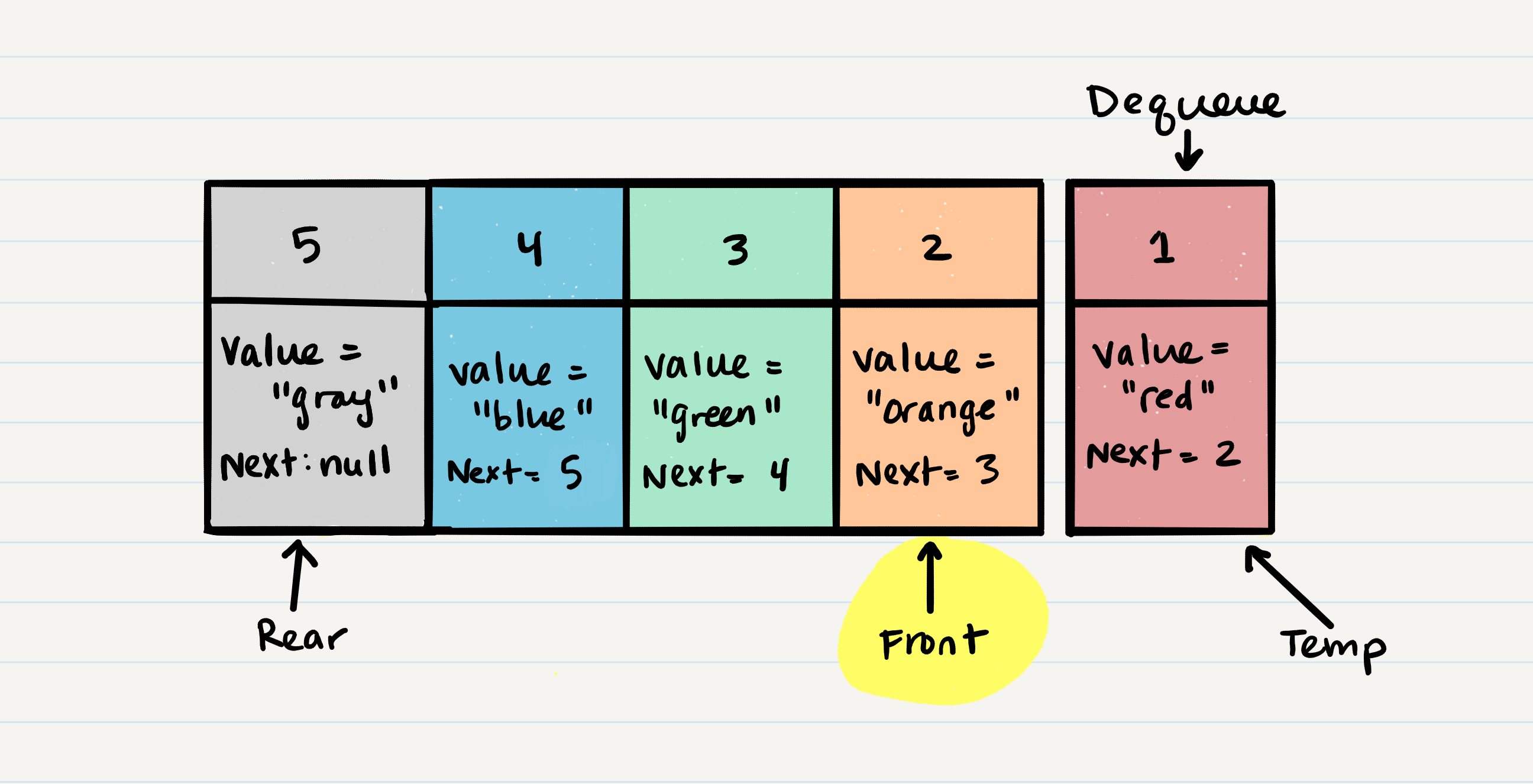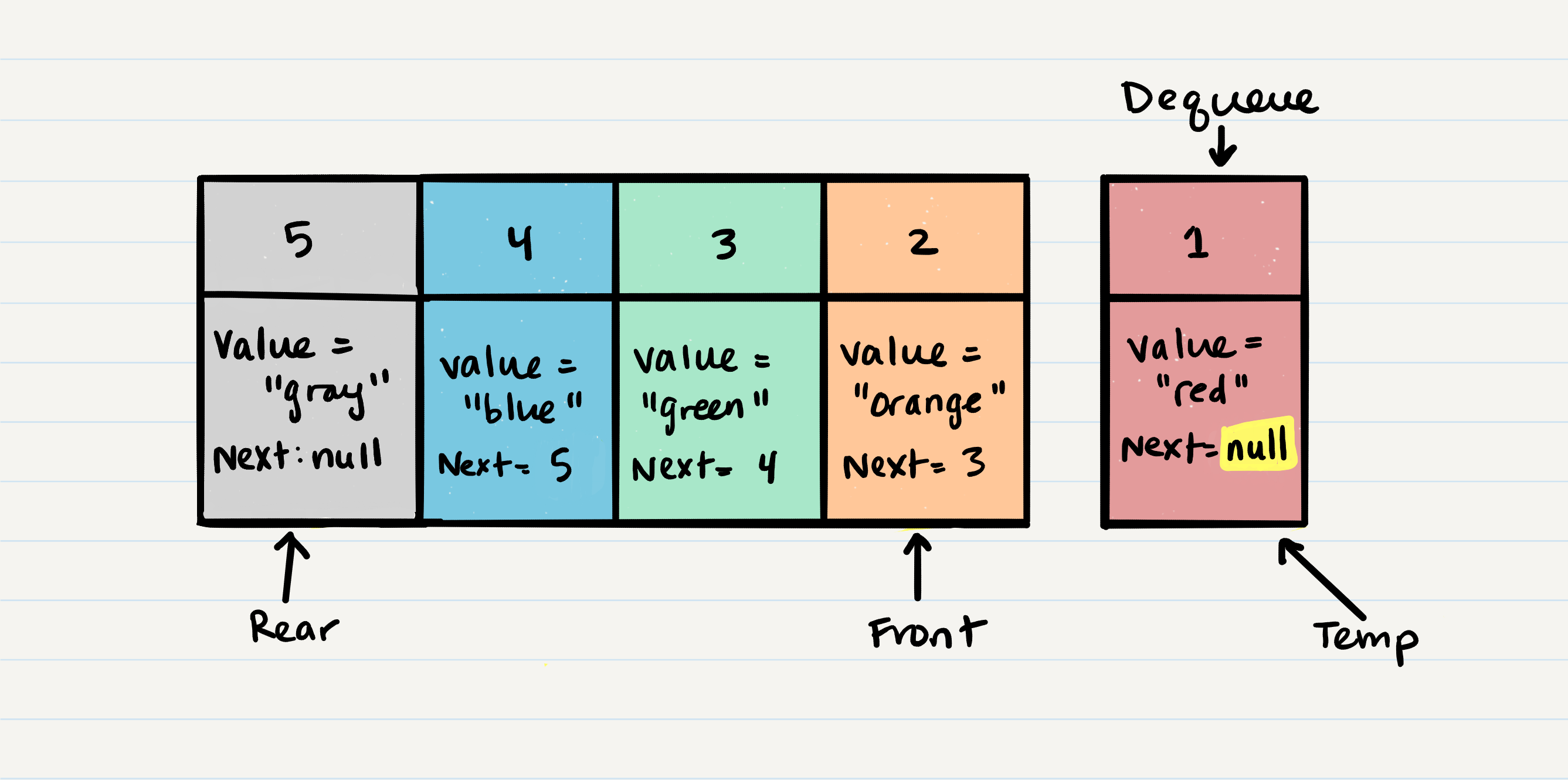Stacks and Queues
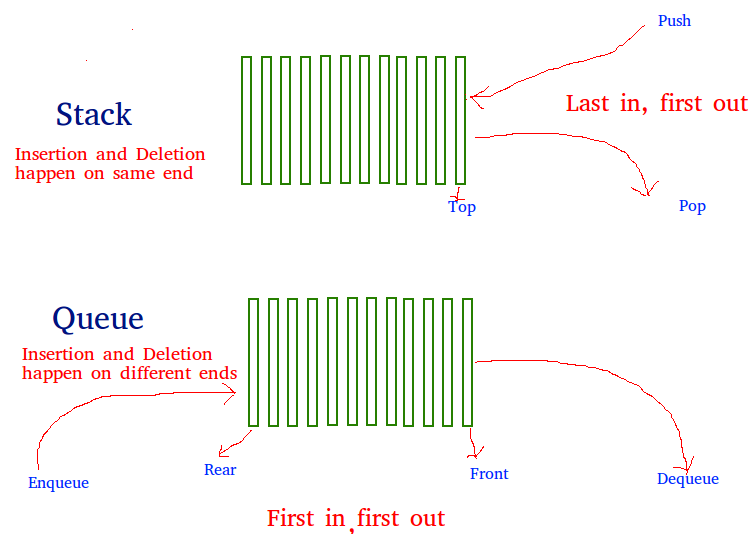
What is a stack?
-
data structure consisting of nodes
-
nodes refence next node in stack
-
nodes don’t reference previous node in stack
1- Push - Nodes or items that are put into the stack are pushed
Steps
- Have a node you want to add
- Assign the next property to reference the same node that top is referencing. Top is the node on top of the stack
- The new node is added to the stack but you need to indicate that it is now the first node. Re-assign our reference top to the new node then you’re done!
2-Pop - Nodes or items that are removed from the stack are popped. When you attempt to pop an empty stack an exception will be raised.
Steps
- Create a reference named temp that points to the same node that top points to
- Reassign top to the value of the next node
- Clear out the next property in the temp node then remove it
- Return the value of the temp node that was popped
3-Top - This is the top of the stack.
4-Peek - When you peek you will view the value of the top Node in the stack. When you attempt to peek an empty stack an exception will be raised.
5-IsEmpty - returns true when stack is empty otherwise returns false.
stack concept
FILO
First In Last Out
This means that the first item added in the stack will be the last item popped out of the stack.
LIFO
Last In First Out
This means that the last item added to the stack will be the first item popped out of the stack.
Stack Visualization
PUSH
assign the next property of Node 5 to reference the same Node that top is referencing: Node 4
re-assign our reference top to the newly added Node, Node 5.
What is a Queue
Common terminology for a queue is
1-Enqueue - Nodes or items that are added to the queue.
2-Dequeue - Nodes or items that are removed from the queue. If called when the queue is empty an exception will be raised.
3-Front - This is the front/first Node of the queue.
4-Rear - This is the rear/last Node of the queue.
5-Peek - When you peek you will view the value of the front Node in the queue. If called when the queue is 6-empty an exception will be raised.
7-IsEmpty - returns true when queue is empty otherwise returns false.
Queues follow these concepts:
FIFO
First In First Out
This means that the first item in the queue will be the first item out of the queue.
LILO
Last In Last Out
This means that the last item in the queue will be the last item out of the queue.
Enqueue
Steps
- Change the next property of the rear node to point to the new node being added. Use rear.next
- Re-assign the rear reference to point to the new node and you’re done.
change the next property of Node 4 to point to the Node we are adding.
re-assign the rear reference to point to Node 5
Dequeue
create a temporary reference type named temp and have it point to the same Node that front is pointing too.
re-assign front to the next value that the Node front is referencing
re-assign the next property on the temp Node to null
Steps
- Made the front node have a temporary reference of temp.
- Re-assign front to the next node in the queue
- Reassign the next property on the temp node to be null. You have to properly clear unnecessary references
- Return the value of the temp node that was removed
